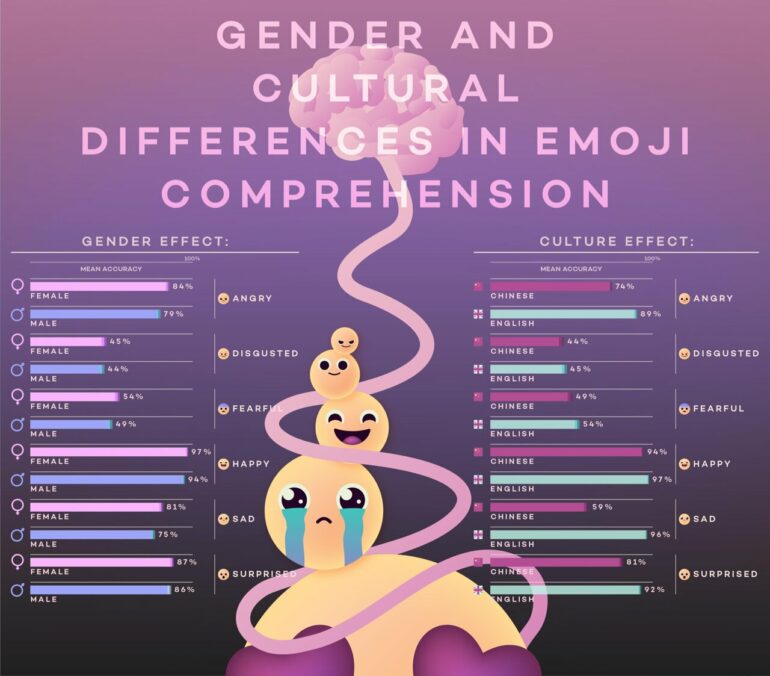Gender, culture, and age all appear to play a role in how emojis are interpreted, according to a study published in PLOS ONE by Yihua Chen, Xingchen Yang and colleagues from the University of Nottingham, UK.
Stylized images of faces expressing different emotions, emojis can add both emotional nuance as well as potential ambiguity to electronic messages.
To understand how gender, age, and culture may influence emoji interpretation, Chen, Yang and colleagues recruited a group of 253 Chinese and 270 UK adults (51% women and 49% men, ranging in age from 18 to 84 years old) to review 24 different emojis the authors selected to represent six basic emotional states: happy, disgusted, fearful, sad, surprised, and angry. (Each of the six studied emojis was represented four times, using emojis from the Apple, Windows, Android, and WeChat platforms, all of which are slightly different from one another.)
The researchers assessed how often participants’ interpretations of the emojis’ meanings matched the emotion labels assigned by the study authors. They found that the older the participant, the less their interpretations matched the labels for surprised, fearful, sad and angry emojis. Women’s interpretations of happy, fearful, sad and angry emojis were more likely to match the labels than men’s. UK participants’ interpretations were more likely than Chinese participants’ to match the assigned labels for all but the disgusted emoji.
Since only six basic emoji types were used, they may not correspond exactly with emojis as used in real life with access to all potential emoji types. (For instance, the emoji chosen to represent “disgust” in this study is classified as “confounded face” on Unicode.org, which possibly explains why there was difficulty across all participants in classifying this face.)
The results underscore the importance of context when using emojis—for instance, the possibility that the “smile” emoji categorized as “happy” in this study is not always used to signify happiness, especially for Chinese participants.
Furthermore, some demographic differences were partially mediated by participants’ familiarity with a particular emoji; future studies should examine individual differences in the interpretation of a wider selection of frequently used emoji both in and out of context. The authors note the ambiguity of emojis is a topic worth further research, especially when communicating across gender, age, or cultures.
More information:
Individual differences in emoji comprehension: Gender, age, and culture, PLoS ONE (2024). DOI: 10.1371/journal.pone.0297379
Provided by
Public Library of Science
Citation:
Study finds emojis are differently interpreted depending on gender, culture, and age of viewer (2024, February 14)



